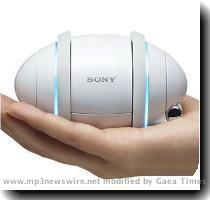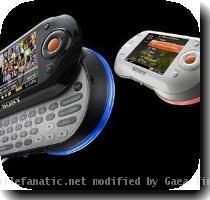Sony Ericsson hopes to get bigger in the US with new touch-screen phones
By APWednesday, February 17, 2010
Sony Ericsson hopes new phones will be big in US
BARCELONA, Spain — Sony Ericsson, a big but struggling maker of phones internationally, wants to be more than a bit player in the U.S. It plans to get there by giving U.S. consumers what they want: phones similar to the iPhone.
The strategy is much like the comeback recipe of U.S.-based Motorola Inc., which has hit on hard times since its Razr phone fell from popularity. It’s revamping itself as a maker of smart phones running Google Inc.’s Android software.
Sony Ericsson announced that it was making its first Android phone, the Xperia X10, in November. This week, it revealed two more in Barcelona at Mobile World Congress, the world’s largest cell phone trade show. It hasn’t announced a deal with a U.S. carrier yet, but the venture’s president, Bert Nordberg, hinted that the devices would likely be carried by AT&T Inc.
That would be good news for Sony Ericsson, whose previous flagship smart phone, the Windows-powered Xperia X1, wasn’t sold by any U.S. carrier. Since carriers (also known as operators in the industry) subsidize expensive phones, they’re the gatekeepers of the U.S. phone market.
“If you want to be big in America you need to work with the operator,” Nordberg said.
Sony Ericsson has also been hamstrung in the U.S. market because its phones work fully only on AT&T’s network. Nordberg said it would adapt future models to other U.S. providers, but didn’t give any specifics.
The X10 is a keyboard-less touch-screen phone very similar to the iPhone. The X10 mini, announced at the show, has the same layout but is half the size, an unusual design for a smart phone. The X10 mini pro looks the same, but features a slide-out keyboard. Prices were not announced.
The joint venture of LM Ericsson AB of Sweden and Sony Corp. of Japan sold 14.6 million phones in the fourth quarter, making it the world’s fourth-largest phone maker, just ahead of Motorola. The two have been trading places as No. 4 for a while. Nokia Corp., LG Electronics Inc. and Samsung Electronics Co. are all bigger. Yet Motorola is much bigger in the U.S. market, where consumers are enamored with expensive smart phones.
“With the portfolio we launched now, we think we have unfairly low market share in the U.S.,” Nordberg said.
Sony Ericsson’s revenue has been plunging, as has Motorola’s, and for similar reasons.
Motorola rode high for a few years on the success of the Razr, then failed to come up with a new hit. Sony Ericsson’s “chief creation officer,” Rikko Sakaguchi, said his company focused too much on its Cybershot camera phones and Walkman music phones. They were popular for a while, but faded when the iPhone entered the scene. The “camera” and “music” tags became too closely associated with the phones, he said, even though the capabilities of the phones went beyond those functions.
“More and more, people starting saying: ‘I want something more, so I don’t want a Walkman phone,’” Sakaguchi said.
Retooling for a new type of phone has taken time, and the attendant sales dip has cost jobs. In April, Sony Ericsson announced a plan to cut 20 percent of its 10,000 positions. It closed locations around the world, including its development center in Research Triangle Park, N.C.
Tags: Barcelona, Communication Technology, Consumer Electronics, Europe, Geography, Mobile Communications, North America, Products And Services, Spain, United States, Western Europe

